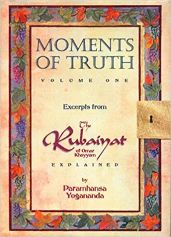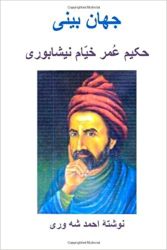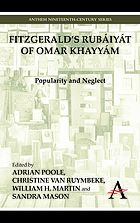Omar Khayyam and mysticism. Carrington, Hereward. Poet Lore, 19 (1908), pp. 458–466
Archives
‘Umar of Nishapur
‘Umar of Nishapur. Pickering, C.J. National Review, (1890), (Dec.), pp. 1-16
Omar Khayyam
Omar Khayyam. Keene, H.G. MacMillans’s Magazine, 57 (1887) (Apr.), pp. 27-32.
Omar Khayyam, the astronomer-poet of Persia
Omar Khayyam, the astronomer-poet of Persia. Cowell, Edward Byles. Calcutta Review, (1858), 59, pp. 149-162.
General virtues of Umar Khayyam’s philosophical views
General virtues of Umar Khayyam’s philosophical views. Gulnoza Akramovna Yunusova.
In: International Scientific Journal of Theoretical and Applied Science, vol. 85 (2020), nr. 5, p. 328-332.
Summary:
The article describes the interpretation of the works of Umar Khayyam and their philosophical concepts. Khayyam attracted the attention of all as a person who did not follow any of the various categories of his time with his whole being, and who had an independent opinion and position. On the other hand, he seems to have been a more cautious man. After all, not everyone was able to live long in a very delicate and complex period and avoid severe conflicts.
Eliot possessed: T.S. Eliot and FitzGerald’s Rubáiyát
Eliot possessed: T.S. Eliot and FitzGerald’s Rubáiyát. Vinnie-Marie D’Ambrosio. New York: New York University Press, 1989. X, 244 p. ISBN: 0814718140.
Summary:
By his own account, T. S. Eliot’s love for poetry began when he first encountered the Rubáiyát at the age of fourteen, although he also claimed that he soon outgrew FitzGerald’s poem. D’Ambrosio’s monograph examines the complex ways in which both the poem and the figure of FitzGerald himself continued to haunt Eliot throughout his poetic career. (Victorian poetry, 2008)
Moments of truth : excerpts from the Rubaiyat of Omar Khayyam explained Moments of truth : excerpts from the Rubaiyat of Omar Khayyam explained
Moments of truth. Yogananda, Paramahansa; Donald J. Walters. Nevada City, Crystal Clarity Publishers, 1995. ISBN: 9781565897250.
“Reprint of the Philosophical Library 1946 first edition.”
German translation: Paramahansa Yogananda interpretiert die Rubaijat des Omar Chajjam, 1996.
FitzGerald’s Rubáiyát: A Victorian Invention
FitzGerald’s Rubáiyát: A Victorian Invention. Esmail Zare-Behtash. The Australian National University, 1997.
Summary:
This study was written in the belief that FitzGerald did not so much translate a poem as invent a persona based on the Persian astronomer and mathematician (but not poet) Omar Khayyám. This ‘invention’ opened two different lines of interpretation and scholarship, each forming its own idea of a ‘real’ Omar based on FitzGerald’s invention. One line sees Omar as a hedonist and nihilist; the other as a mystic or Sufi. My argument first is that the historical Omar was neither the former nor the latter; second, FitzGerald’s Rubáiyát is a ‘Victorian’ product even if the raw material of the poem belongs to the eleventh-century Persia. The Introduction tries to find a place for the Rubáiyát in the English nineteenth-century era.
World outlook of Hakim Umar Khayyam
World outlook of Hakim Umar Khayyam. Ahmad Shahvari. Mumbay, Shahvary, 1999. 86, [3] pp.
Summary:
Purpose of this book is to provide a new window for thinking about Khayyam’s views regarding the principle questions about life, man, creation. Shahvary discusses a number of quatrains from various translations.
FitzGerald’s Rubáiyát of Omar Khayyám. Popularity and Neglect
FitzGerald’s Rubáiyát of Omar Khayyám. Popularity and Neglect. Edited by Adrian Poole, Christine van Ruymbeke, William H. Martin and Sandra Mason. Anthem Press, 2011.
240 p. ISBN 9780857287816.



